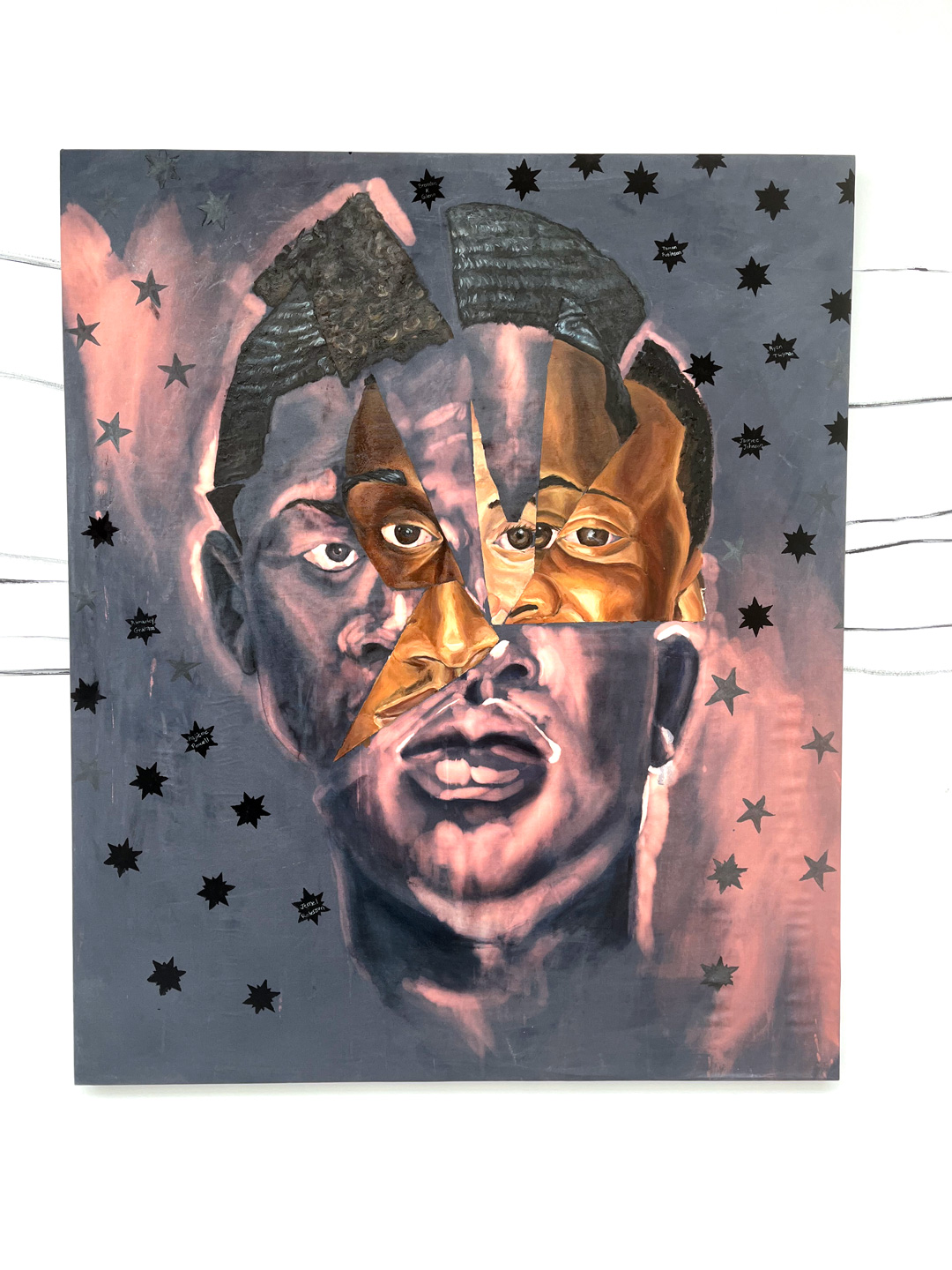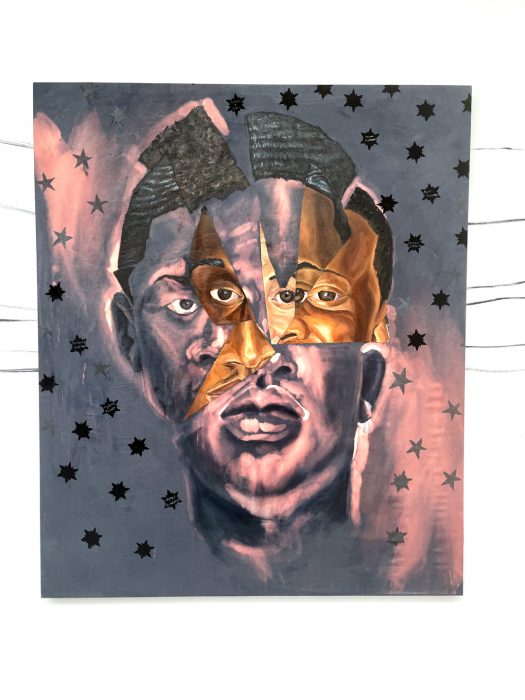April 12, 2023

Transcript by Gallery & Curatorial Fellow Calla Savelson

Transcript
This piece is titled
Say His Name:
Ramarley Graham 18, February 2, 2012
Jamee Johnson 22, December 14, 2019
Ryan Twyman 24, June 6, 2019
Kajieme Powell 25, August 19, 2014
Jemel Roberson 26, November 11, 2018
Tamon Robinson 27, April 12, 2012
Brendon Glenn 29, May 5, 2015
These are the names of seven Black men who were killed by the police.
This massive painting began as a collage in which Anthony sketched out each individual, fractured the portraits, and then created a singular image out of each their faces. Containing cubist elements, the final painting features a fragmented face complete with several sets of eyes, and multiple noses and lips, placed on the various heads of these men.
Anthony’s process for this piece and works like it is quite unique. After his initial collage study, Anthony begins with bleach, slowly layering the substance, watching as the face forms. On the navy blue canvas, the bleach activates in a pinkish hue, and viewers can see where Anthony layered the product the most on parts of the image such as the noses, lips, and outline of the head and ears. Bleach is used for cleansing, sanitizing, and erasing; Anthony thinks about these qualities of bleach in the context of those affected by police brutality, racism, and hate crimes. Erasure is a common theme in covering up and normalizing white supremacy, and in this piece, Anthony uses bleach as a way to expose and comment on the act of erasing and silencing narratives. While he uses bleach as a destructive chemical, Anthony is also rendering light with it. Here, he works from dark to light, starting with the intense dark blue of the canvas, and slowly adding bleach, creating luminosity. The duality of the bleach as a painting medium encourages viewers to find light in situations that may feel hopeless.
After laying down the bleach and deactivating it to keep the canvas from deteriorating, Anthony applies rabbit skin glue, a sealant that can be used on wood panels or canvas before applying oil paint. Once the bleach and the canvas is sealed, he then goes in with oil paint, laying down the bright pigment which now faces us.
Something else unique about this piece is that it sits on a blue canvas. Anthony thinks of blue and purple hues as an extension of Blackness. These colors are prominent in denim, making Anthony ponder working class materials and the working class population. They also appear in water, a connecting thread throughout the world that each and every living entity relies on. Haint blue, which is a lighter tone of blue and can be viewed within Anthony’s head jugs, is a common color that folks paint their porch ceilings in the south. Having this color mark the entrance of their homes is supposed to keep away evil spirits and protect those inside. This color has become an important theme throughout his work as it represents an abstracted sense of Blackness.
While making this work, Anothony was constantly thinking about his process and materials, and how they are a part of a larger conversation. Art is a way to connect with people who may otherwise be unwilling to partake in difficult conversations, and Anothony hopes that this work can prompt questions and discussions.